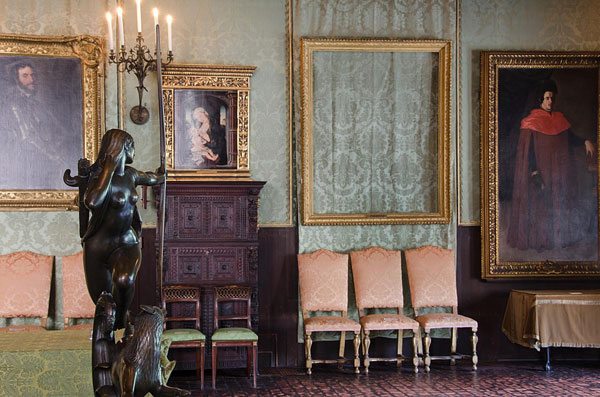
March 21, 2018; Boston Globe
The Isabella Stewart Gardner Museum is a jewel of a place where specific paintings are ordained to hang on specific walls—unless they have been stolen. The Gardner is, of course, the site of the largest art heist in history. In 1990, 13 paintings were stolen by two men dressed up as police officers. Over the ensuing 28 years, law enforcement has advanced a variety of theories and pursued any number of suspects, but the generous reward for information leading to the artworks’ recovery has yet gone unclaimed. The empty frames have remained on the walls in wait for their art.
But now a local startup technology company, Cuseum, perhaps with a good eye for an opportunity to gain instant profile, has come up with a placeholder. Hacking the Heist will, through augmented reality, return the paintings to their frames using an app that can be loaded into your tablet or smartphone.
Sign up for our free newsletters
Subscribe to NPQ's newsletters to have our top stories delivered directly to your inbox.
By signing up, you agree to our privacy policy and terms of use, and to receive messages from NPQ and our partners.
“It’s very seamless in that there’s no buttons or complicated interface,” said Brendan Ciecko, chief executive and founder of Cuseum. “You’re literally holding up your device and overlaying the paintings that would have previously hung in the frames.”
But perhaps this is another heist of a sort, because it appears that the museum has not authorized the app, which now shows only two of the missing paintings: Rembrandt’s A Lady and Gentleman in Black and Christ in the Storm/Storm on the Sea of Galilee. But now that proof of concept is complete, and everyone already knows about it… why do I suspect that Isabella herself, as a woman who likes keeping things within a certain sensibility, would be horrified?—Ruth McCambridge













